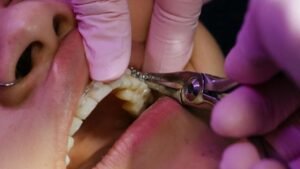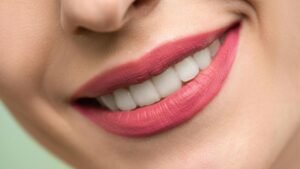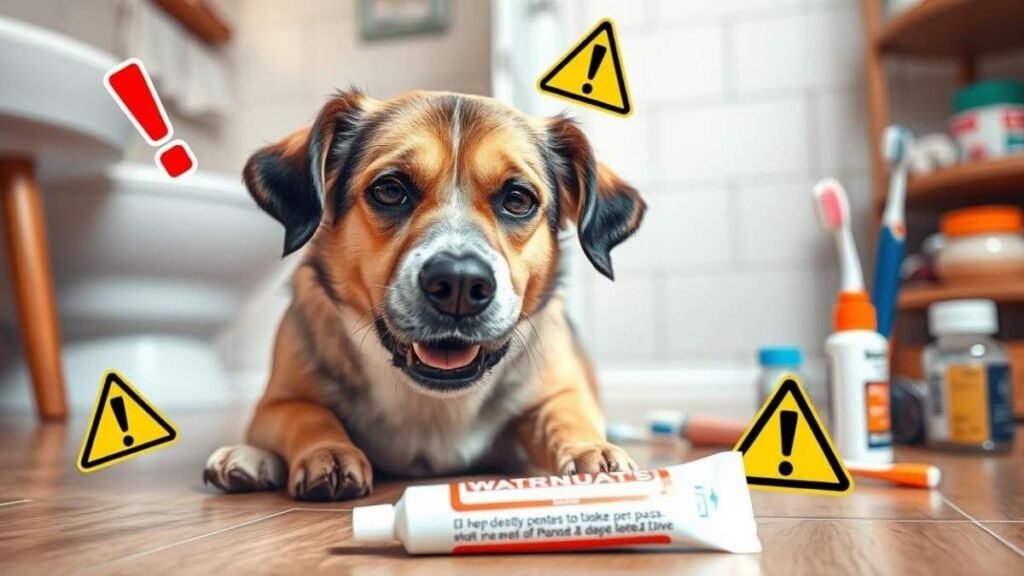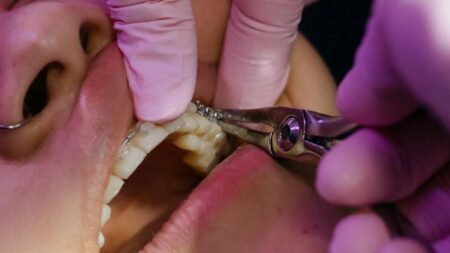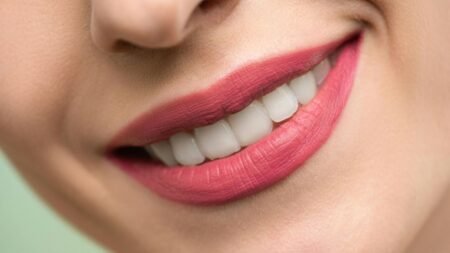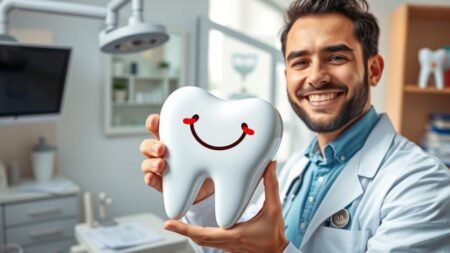Ever thought about using your toothpaste on your dog? Think again! Human toothpaste isn’t safe for dogs. Let’s look into why dogs need their own toothpaste for good oral health.
Dog toothpaste is not just a trend. It’s essential for your pet’s health. Over 80% of dogs over three have periodontal disease. So, using safe toothpaste for dogs is key.
Choosing the right toothpaste for your dog is important. Dog-specific toothpaste has special formulas and flavors. It’s better than human toothpaste for your dog’s health. So, before using human toothpaste, let’s see why dogs need their own.
Understanding Dog Dental Health Basics
Keeping your dog’s teeth clean is key for their health. It’s not just about fresh breath. It’s about stopping serious problems that can harm their life quality.
The Importance of Regular Dental Care
Regular brushing is vital for your dog’s dental health. Just like us, dogs need daily care to avoid plaque and tartar. Brushing their teeth can greatly improve their oral health and save you from expensive dental issues later.
Common Dental Problems in Dogs
Dogs face many dental issues. These include:
- Bad breath
- Gum inflammation
- Tooth decay
- Periodontal disease
Signs of dental problems in dogs include trouble eating, pawing at their mouth, and a lot of drooling. If you see these signs, it’s time to take them to the vet.
Statistics on Canine Periodontal Disease
Periodontal disease is a big worry for dog owners. Here are some shocking stats:
| Age Group | Prevalence of Periodontal Disease |
|---|---|
| Dogs under 3 years | 20% |
| Dogs over 3 years | 80% |
These numbers show why early and regular teeth cleaning is so important. Regular dental care can stop gingivitis from turning into worse periodontal disease. It helps keep your dog healthy overall.

Can You Use Human Toothpaste on Dogs
You might think using your toothpaste on your dog is okay, but it’s not. Human toothpaste dangers for dogs are real and can be harmful. Let’s look at why you should never use human toothpaste for your furry friend’s dental care.
Dangers of Fluoride for Dogs
Fluoride toxicity is a serious risk for dogs. Unlike humans, dogs can’t spit out toothpaste. They swallow it, which can lead to stomach upset or worse. In high doses, fluoride can cause severe health issues in dogs.
Risks of Xylitol in Human Toothpaste
Xylitol poisoning is another major concern. This artificial sweetener, common in human toothpaste, is toxic to dogs. Even small amounts can cause a dangerous drop in blood sugar and liver failure in dogs.
Harmful Effects of Sodium Lauryl Sulfate
Sodium Lauryl Sulfate (SLS) in human toothpaste can upset your dog’s stomach. While it helps create foam in toothpaste, it’s not meant to be swallowed. Dogs can’t rinse and spit, making SLS harmful to their digestive system.
| Ingredient | Effect on Dogs |
|---|---|
| Fluoride | Stomach upset, toxicity in high doses |
| Xylitol | Low blood sugar, liver failure |
| Sodium Lauryl Sulfate | Gastrointestinal distress |
Remember, your dog’s health comes first. Always use toothpaste made for dogs to keep their teeth clean and their bodies safe.
Safe Dog Toothpaste Options
Choosing the right toothpaste for your dog is key to preventing dental disease. Dog-specific toothpaste is safe and effective for their oral health. Let’s look at some options to keep your furry friend’s teeth clean and healthy.
Enzymatic Dog Toothpaste Benefits
Enzymatic toothpastes are great for dogs. They have special enzymes that break down plaque and tartar. These toothpastes work well even without brushing, perfect for dogs who don’t like tooth cleaning.
A small amount of enzymatic toothpaste can remove plaque and freshen breath.
Veterinarian-Recommended Brands
Many vets recommend certain dog toothpaste brands. These products are safe and effective. They come in flavors dogs love, like chicken or beef.
Using a dog toothbrush with angled handles makes applying these toothpastes easier.
Natural and Homemade Alternatives
Some pet owners prefer natural or homemade toothpaste for their dogs. These can be made with safe ingredients like baking soda, coconut oil, and broth. Here’s a simple recipe you can try:
| Ingredient | Amount | Purpose |
|---|---|---|
| Baking soda | 1 tablespoon | Whitens and cleans |
| Coconut oil | 1 tablespoon | Fights bacteria |
| Chicken broth | 1 teaspoon | Adds flavor |
| Mint leaves | 1-2 leaves, finely chopped | Freshens breath |
Mix these ingredients to create a paste. Store in the fridge for up to two weeks. Remember, regular brushing is key to preventing dental issues, no matter the toothpaste you choose.
Proper Dog Teeth Brushing Techniques
Keeping your dog’s teeth clean is vital for their health. Learning the right way to brush their teeth can make it a good experience for both of you.
Choosing the Right Toothbrush
Choosing the right toothbrush is important for cleaning your dog’s teeth. Finger toothbrushes are good for beginners. They let you gently rub your dog’s gums and get them used to brushing.
Once your dog gets used to it, you can switch to a dog toothbrush with soft bristles.
Step-by-Step Brushing Guide
Begin by rubbing your finger on your dog’s gums to help them get used to it. Then, let them taste dog-friendly toothpaste. Start brushing the front teeth first, then the back molars.
Focus on the outer surfaces of the teeth. Use gentle circular motions.
Frequency and Duration Recommendations
For the best oral health, brush your dog’s teeth every day. If that’s hard, aim for at least three times a week. Each brushing should last about two minutes.
Split this time into 30 seconds for each side of their mouth. Being consistent is important for keeping your dog’s teeth clean.
| Brushing Frequency | Duration | Focus Areas |
|---|---|---|
| Daily (ideal) | 2 minutes | Outer surfaces, back molars |
| 3 times/week (minimum) | 30 seconds per side | Canines, cheek teeth |
Establishing a Dental Care Routine
Creating a consistent dental care routine is key for your dog’s oral health. Start by brushing your dog’s teeth regularly. Aim for daily brushing, but even three times a week can help prevent tartar buildup. Choose a quiet time and place for this important task.
For small dogs, hold them securely in your lap. Larger breeds can sit beside you during the teeth brushing routine. Gradually introduce tooth brushing by starting with rubbing their teeth using a finger or cloth. As your pet becomes comfortable, progress to a toothbrush designed for dogs.
Use pet-safe toothpaste when brushing your dog’s teeth. Many come in flavors like chicken, beef, or peanut butter to make the experience more enjoyable. Always make the dental care session positive with praise and rewards.
- Brush your dog’s teeth at least 3 times a week
- Daily brushing is ideal to prevent periodontal disease
- Professional cleanings are recommended annually
- Consider dental treats with the Veterinary Oral Health Council’s Seal of Acceptance
Remember, dental care goes beyond brushing. Incorporate dental chews, water additives, or specialized dental food into your pet’s routine. These additional measures can help maintain your dog’s oral health between brushing sessions.
Additional Dental Care Products and Solutions
Keeping your dog’s teeth healthy is more than just brushing. Let’s look at some extra ways to keep their teeth shining.
Dental Chews and Toys
Dental chews are a tasty way to clean your dog’s teeth. They help cut down on plaque and make their breath fresh. Many dogs enjoy chewing on these treats, making dental care fun. Chew toys also help by massaging gums and removing tartar as your dog plays.
Professional Cleaning Services
Sometimes, your pup needs extra help. Professional cleaning services give a deep clean for your dog’s teeth. Vets use special tools to remove tough buildup. They can find issues you might miss at home. It’s a good idea to schedule these cleanings yearly.
Dental-Friendly Diet Options
What your dog eats affects their teeth. Dry dog food is great for dental health. Its crunchy texture helps clean teeth as your dog chews. Some brands make special dental diets. These foods have ingredients that fight plaque and tartar. Ask your vet about the best dental-friendly diet for your dog.
- Choose dental chews approved by vets
- Book regular professional cleanings
- Pick dry dog food for daily dental care
- Consider dental diets for high-risk dogs
Remember, these products work best when used with regular brushing. A mix of home care and professional help keeps your dog’s smile bright and healthy.

Conclusion
Pet dental care is key to your dog’s health. Keeping their teeth clean can stop serious dental problems. It also helps them live a happy, healthy life. Always use safe toothpaste for dogs, as human toothpaste can harm them.
Good dental care for dogs needs a few steps. Brush their teeth with dog-specific toothpaste, which tastes like chicken or peanut butter. Try to brush every day, but even 3-4 times a week helps a lot. Don’t forget to change your dog’s toothbrush every three months.
Brushing teeth is just part of the job. Dental chews, vet cleanings, and a healthy diet are also important. Regular vet visits help keep an eye on your dog’s teeth. By focusing on dental care, you can stop common dental diseases that hit over 80% of dogs by age three.
With the right effort and tools, your dog can have a healthy mouth all their life. A happy, healthy smile is good for your dog’s overall happiness and health.
Dog Dental Care FAQ
Can you use human toothpaste on dogs?
No, you should never use human toothpaste on dogs. Human toothpaste has ingredients like fluoride, xylitol, and sodium lauryl sulfate that are toxic to dogs. Always use toothpaste made for dogs to keep your pet safe.
How often should I brush my dog’s teeth?
Vets say to brush your dog’s teeth twice a day, or at least once a day to stop dental disease. If you can’t do that, try to brush at least three times a week to keep their mouth clean.
What are the signs of dental problems in dogs?
Dental problems in dogs show as bad breath, yellow or brown teeth, swollen or bleeding gums, trouble eating, and pawing at the mouth. If you see any of these, talk to your vet.
Are there alternatives to brushing my dog’s teeth?
While brushing is best, you can also use dental chews, toys that clean teeth, and special diets. But, don’t forget to brush their teeth regularly too.
How do I choose the right toothbrush for my dog?
Pick a toothbrush made for dogs. You can find ones with angled handles, multiple heads, or finger brushes. Choose a size that fits your dog’s mouth and is easy for you to use.
What ingredients should I look for in dog toothpaste?
Look for toothpastes with enzymes like lactoperoxidase, lactoferrin, lysozyme, mutanase, dextranase, and papain. These help cut down plaque and keep it from sticking to teeth.
How can I make teeth brushing more enjoyable for my dog?
Use toothpaste with flavors like poultry, malt, beef, or seafood. Make it a positive experience with praise and rewards. Start slow, letting your dog get used to it little by little.
At what age should I start brushing my dog’s teeth?
Start dental care early, ideally when your dog is a puppy. But, it’s never too late. Older dogs might need more patience and a gentler touch when you start brushing their teeth.
How long should each tooth brushing session last?
Brush for about 30 seconds on each side of your dog’s mouth. The whole process should take 2-3 minutes. Focus on the outer surfaces, like the cheek teeth and canines.
Is professional dental cleaning necessary for dogs?
Yes, dogs need professional dental cleaning by a vet to keep their teeth healthy. How often depends on your dog, but many need annual cleanings.
